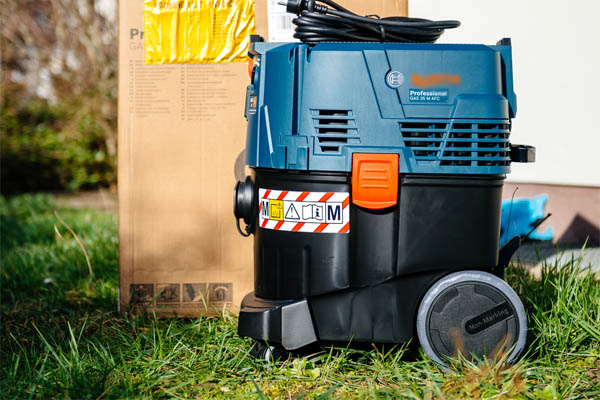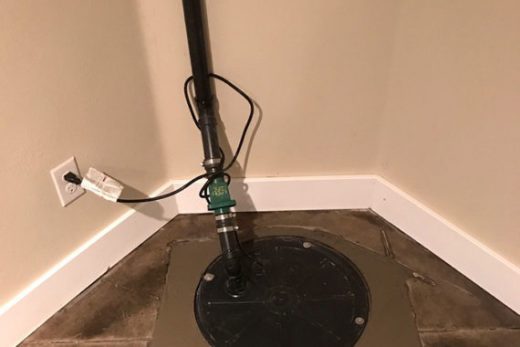Step-by-Step Instructions for Taking Care of a Sump Pump
Step-by-Step Instructions for Taking Care of a Sump Pump
Blog Article
Listed here on the next paragraphs you can locate a good deal of high-quality news about How To Effectively Clean A Sump Pump.

Sump pumps are critical parts in lots of homes, particularly in areas prone to flooding or too much wetness. They assist prevent water damage by effectively getting rid of excess water from cellars or crawl spaces. However, like any other device, sump pumps require normal maintenance to guarantee they function properly when required the most. Cleaning your sump pump is a crucial part of its upkeep, and comprehending how to do it effectively can conserve you from pricey repair services and potential calamities.
Introduction
Keeping a tidy sump pump is crucial for its correct functioning and longevity. Ignoring this crucial job can bring about blockages, breakdowns, and inevitably, water damage to your residential property. As a result, learning exactly how to clean a sump pump is crucial for home owners who rely upon these devices to keep their cellars completely dry and protected.
Indicators of a Dirty Sump Pump
Understanding when your sump pump needs cleansing is crucial for preventing potential malfunctions. Some typical signs that suggest a filthy sump pump include unusual noises throughout procedure, lowered water circulation, and visible debris in the pit. If you notice any of these symptoms, it's vital to clean your sump pump without delay to stay clear of any further problems.
Planning for Cleaning
Before you begin cleaning your sump pump, it's vital to take some security preventative measures. Begin by shutting off the power to the pump to avoid any type of electric mishaps. Furthermore, put on appropriate protective gear, such as handwear covers and goggles, to protect on your own from dirt, particles, and prospective microorganisms.
Recognizing the Sump Pump
Prior to diving right into the cleansing procedure, it's important to have a fundamental understanding of just how a sump pump works. Generally mounted in a pit or basin listed below the basement floor, a sump pump consists of a number of essential elements, including a pump, a float switch, and a discharge pipeline. When water accumulates in the pit, the float button triggers the pump, which after that pumps the water out through the discharge pipeline, far from the building's structure.
Detailed Overview to Cleaning a Sump Pump
Turning off the Power
Begin by separating the power supply to the sump pump to avoid any crashes while cleaning.
Looking For Correct Functioning
Before re-installing the pump, perform a quick examination to ensure that the float button activates the pump appropriately. Pour some water into the sump pit and observe the pump's procedure. If whatever is working correctly, you can reconstruct the pump and reconnect the power supply.
Getting Rid Of Debris and Dust
Make use of a container or a scoop to remove any type of visible debris, dust, or debris from the sump pit. Dispose of the debris correctly to prevent it from blocking the pump or the discharge pipe.
Cleaning the Pump and Drift Switch Over
As soon as the pit is clear of debris, very carefully remove the pump from the pit. Evaluate the pump and the float switch for any indications of damage or wear. Make use of a soft brush or towel to cleanse the surfaces and get rid of any type of built up gunk.
Purging the System
After cleaning the pump and float switch, purge the sump pit with tidy water to remove any remaining dust or debris. This will certainly aid ensure that the pump runs efficiently and efficiently.
Upkeep Tips to Keep Your Sump Pump Clean
In addition to periodic cleansing, there are numerous maintenance ideas you can follow to keep your sump pump in optimal problem:
Final thought
Cleansing your sump pump is a vital aspect of its upkeep and ensures that it runs efficiently when you need it one of the most. By complying with the actions described in this overview and integrating regular upkeep right into your regimen, you can expand the life-span of your sump pump and protect your home from water damages.
6 STEPS ON HOW TO CLEAN A SUMP PUMP PROPERLY
UNDERSTANDING SUMP PUMPS
Your sump pump plays a crucial role in protecting your home by managing and removing excess water. It primarily functions as a “shield”, guarding your basement against the damaging effects of water accumulation. The pump is housed in a sump pit in the lowest part of your basement, and its job is to pump out any water that collects there.
During heavy rainfalls or when snow melts rapidly, water can infiltrate your basement, posing potential risks like flooding, structural damage, and harmful mold growth. Here, the sump pump springs into action, pumping out the intruding water and directing it away from your home.
SAFETY FIRST
Before cleaning, remember to prioritize safety. Disconnect the sump pump from the power source to prevent any accidental electric shocks. Also, wear sturdy gloves to protect your hands from any sharp or dirty components within the pump.
REMOVE THE SUMP PUMP
After ensuring your safety, the next step is to remove the sump pump from its pit. Doing this might require careful maneuvering as you don’t want to damage any pump components. Once removed, clean the sump pit to remove any accumulated debris or sludge.
INSPECT THE PUMP
Inspect the pump for any visible signs of wear or damage. Check the power cord, float switch, and impeller housing. If any components look worn out or damaged, consider replacing them to ensure optimal performance.
CLEAN THE PUMP
Thoroughly clean the pump with warm, soapy water. Make sure to rid it of any dirt, gravel, or other debris that might impede its performance. You can use a toothbrush to clean the small, hard-to-reach parts of the pump.
REINSTALL THE SUMP PUMP
Reinstall the pump into the sump pit Make sure it’s positioned correctly to remove the water effectively Once it’s back in place, reconnect it to the power source TEST THE PUMP
Finally, pour some water into the pit to ensure the pump works correctly. It should start automatically and begin pumping out the water; if it doesn’t, check the power source and the positioning of the pump.
Remember, while cleaning your sump pump is an essential part of home maintenance, hiring a professional plumber for a thorough inspection and cleaning at least once a year is also important. This will ensure that your pump is in optimal condition, ready to protect your home from potential water damage.
BEST PRACTICES FOR CLEANING SUMP PUMP DISCHARGE PIPES
Regular Inspection: Regularly inspect your discharge pipes, especially during heavy rainfall or snowmelt periods. Look for any signs of blockage or damage. Early detection of problems can prevent serious issues down the line. Periodic Cleaning: Over time, sediment and debris can accumulate in the discharge pipes, impeding the flow of water. Regular cleaning helps keep the pipes clear and functioning efficiently. You can use a high-pressure water jet to effectively clean the pipes. Insulation During Winter: In colder climates, discharge pipes can freeze, blocking the outflow of water. Protect your discharge pipes from freezing temperatures by insulating them with foam pipe insulation. This will ensure the sump pump can continue to discharge water even in freezing conditions. Proper Positioning: The discharge pipe should be positioned to direct water away from your home’s foundation. Improper positioning can lead to water seeping back into the basement. Ensure the pipe is long enough and angled correctly. Installation of a Check Valve: A check valve prevents water from flowing back into your sump pit after the pump has pushed it out. Installing a check valve helps maintain the efficiency of your sump pump and reduces the risk of flooding. Minimize Pipe Turns: Every curve or turn in the discharge pipe can decrease the efficiency of water flow. By minimizing turns and bends in your discharge pipe, you can increase the efficiency of your sump pump. https://www.fullspeedplumbing.com/how-to-clean-a-sump-pump-properly9999/

I ran across that piece of writing about Keep Your Sump Pump Clean, It'll Keep You Dry while doing a search on the internet. Do you know somebody else who is very much interested in Cleaning & Maintenance Tips for Your Home's Sump Pump? Be sure promote it. Bless you for your time. Don't forget to check up our site back soon.
Schedule Services Report this page